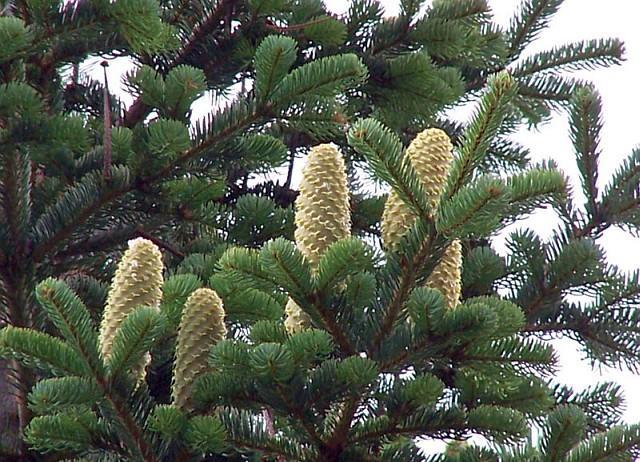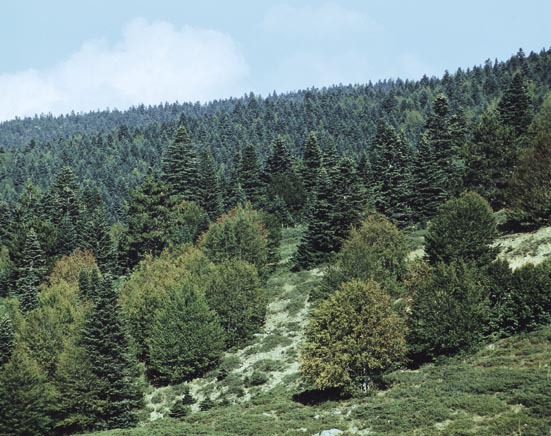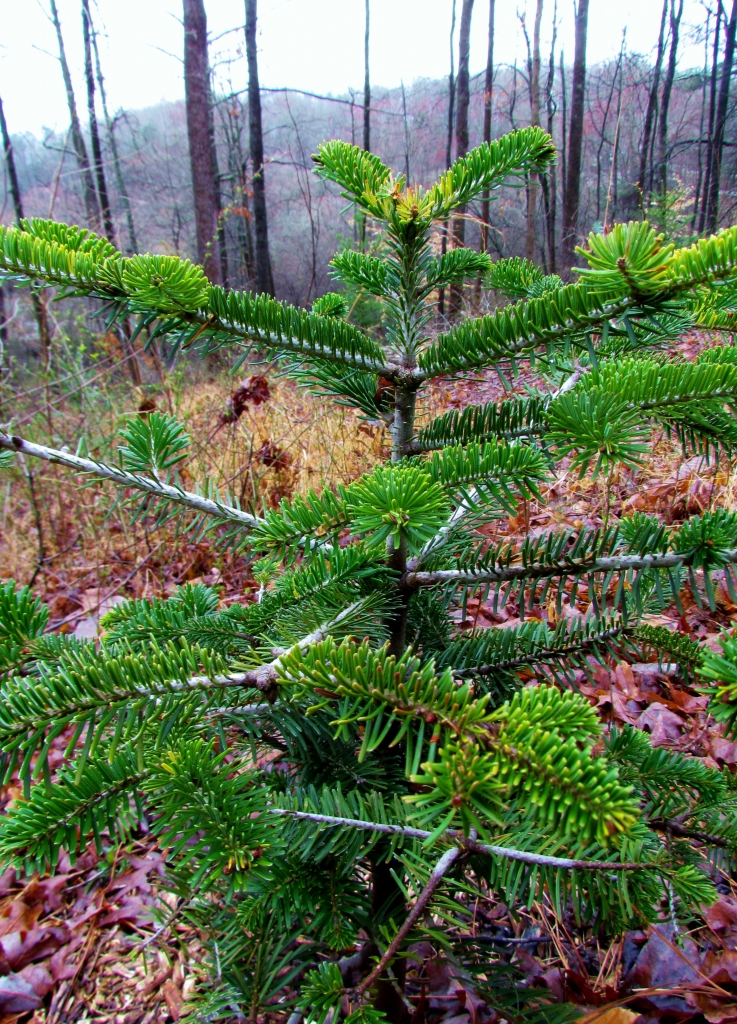A number of synonyms and taxonomic inconsistencies exist with this particular record:
Abies cephalonica x nordmanniana (Jacobsen: 'North American Landscape Trees') Abies bornmuelleriana = Abies nordmanniana subsp. bornmuelleriana (Mattf.) Coode & Cullen.
Abies nordmanniana subsp. equi-trojani, commonly known as Trojan fir or Bornmueller's fir was first described by Aschers. et Sint. ex Boiss.as well as Coode et Cullen. It may not be a hybrid of the parentage reported; it is partly intermediate between Abies cepalonica and Abies cilicica. As it is little studied in nature, and is extremely rare in cultivation, this dispute attends its actual placement in within Abies classification.
Description. Trojan fir is an narrow, conical evergreen coniferous tree which will grow to a mature height of 60 to 100 feet (20 - 30 m) tall, with a 6 to 28 foot (1.8 - 4 m) girth. Needles are blunt, densely upswept, and 1 to 1.2 inches (2.5 - 3 cm) long. Twigs are hairless. Buds are usually resinous. Seed cones are 4 to 5.8 inches (10 - 14.5 cm) long; purplish-brown; with bract tips projecting and recurved.
Distribution. This subspecies of Normann fir grows in pure stands as isolated relic populations on north slopes of high mountains in western Turkey and on Ulu-Dagh in Bithynia. It prefers calcareous soils. (Farjon, Aljos. ©1990. Pinaceae: drawings and descriptions of the genera Abies, Cedrus, Pseudolarix, Keteleeria, Nothotsuga, Tsuga, Cathaya, Pseudotsuga, Larix and Picea. Königstein: Koeltz Scientific Books)
Champion Trees:
This species shows great promise in the landscape, being vigorous and more tolerant of lowland, warmer regions than most Abies .


